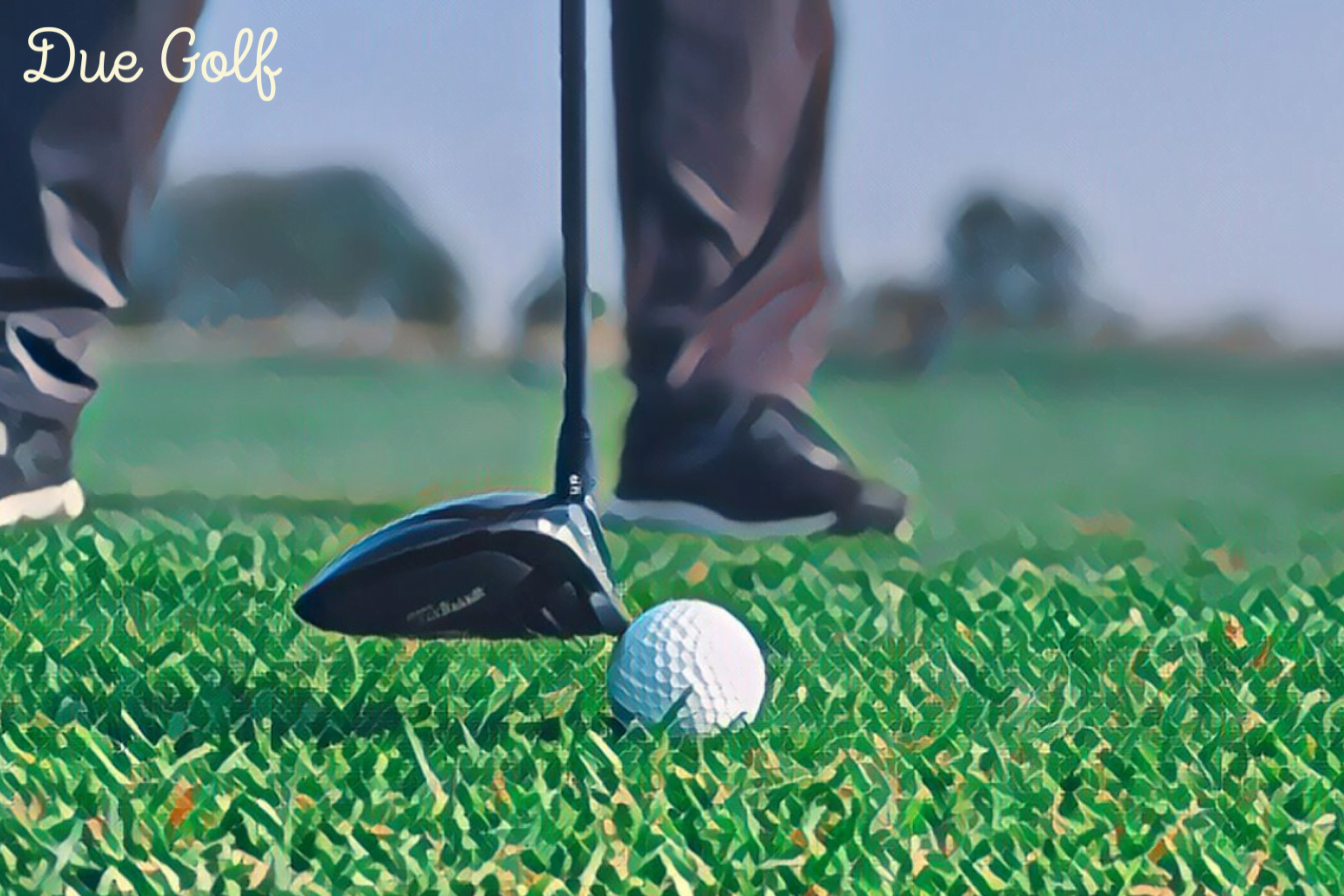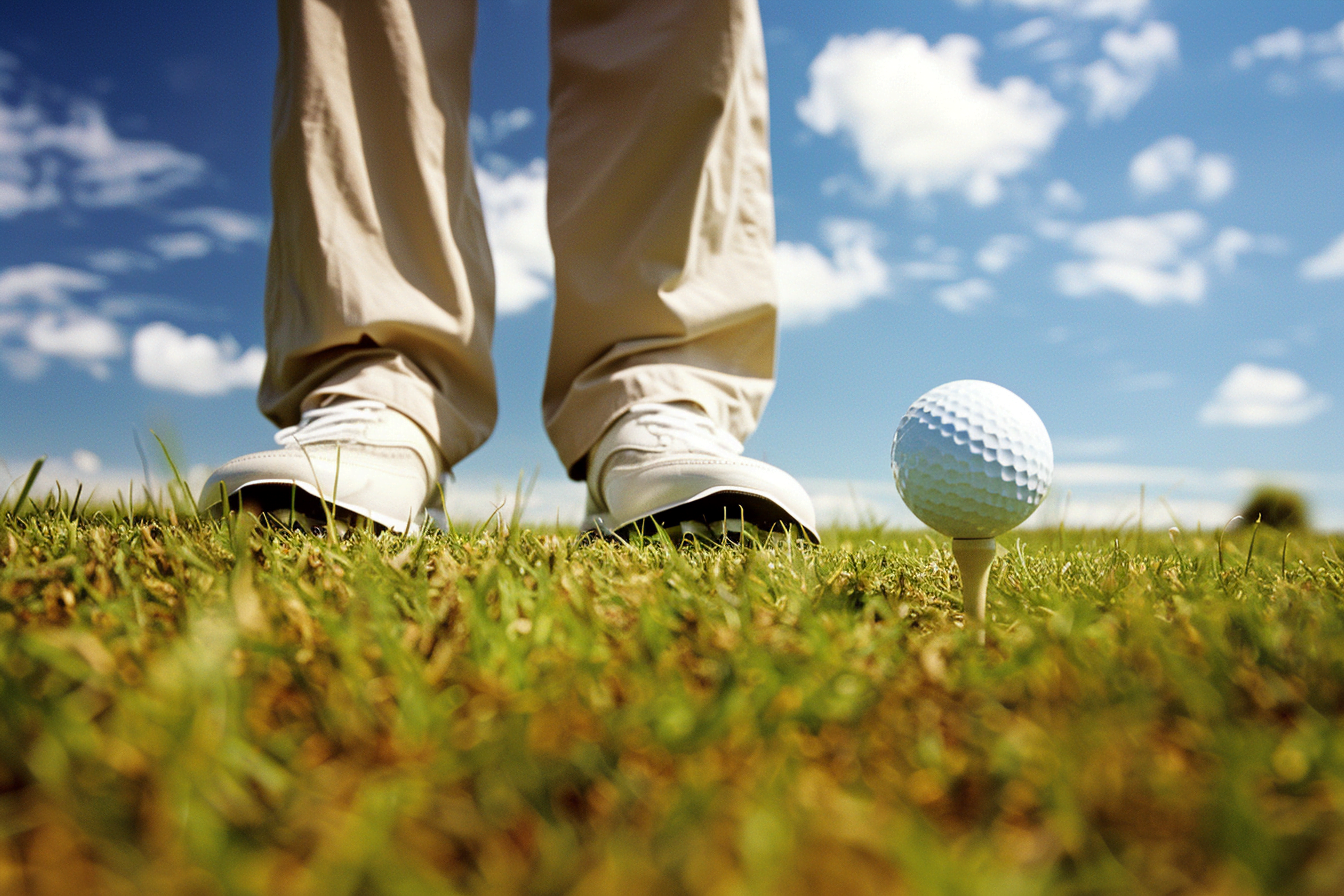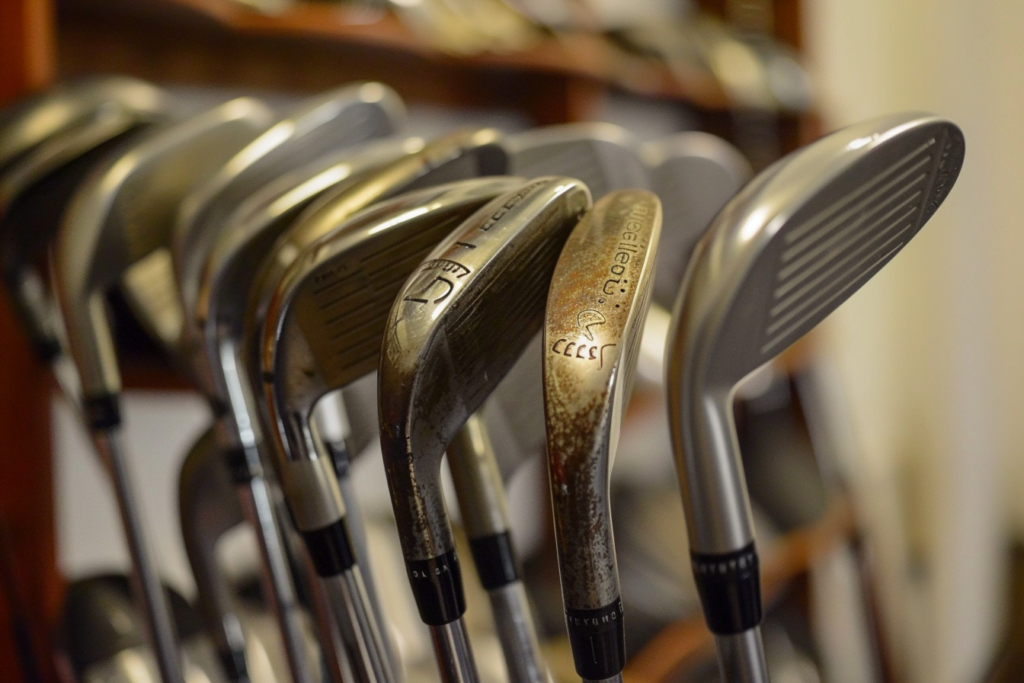
How to Stop Topping the Golf Ball: Topping the golf ball is a common issue that plagues many golfers, from beginners to seasoned players. It occurs when the club strikes the ball above its equator, leading to a shot that rolls along the ground rather than lifting into the air. Not only does this mistake reduce the distance the ball travels, but it can also lead to a loss of control over the ball’s direction, making it difficult to stay on the fairway or reach the green.
Contents
Understanding the mechanics behind a topped shot is crucial for overcoming this problem. Common causes include improper stance, early release of the hands, lack of follow-through, or an incorrect perception of the ball’s position. By analysing one’s swing and making the necessary adjustments, golfers can learn to make solid contact with the ball, achieving the desired trajectory and improving their overall game.
Instructional insights from top golf teachers suggest various techniques to correct the topping issue. These include drills like focusing on hitting the ground to create a divot after the ball, maintaining arm extension during the swing, and ensuring the body bows forward correctly. Engaging in regular practice with these methods can significantly alter the quality of a golfer’s contact with the ball, bringing more consistency to their shots.
Understanding Topping the Golf Ball
When a golfer tops the ball, it means the club hits the ball above its equator, resulting in a shot that skims along the ground. This mistake is often due to several factors, which might include incorrect weight distribution, improper stance, or an ascent in the swing path. The golfer’s goal is to strike the ball with the clubface’s sweet spot, and failing to do so causes topping.
Key Reasons for Topping:
- Body Movement: If the golfer’s body sways or lifts during the swing, it can alter the height of the club head on the return to the ball.
- Balance: Poor balance may lead to an uneven weight shift from the back foot to the front foot, which is crucial for a well-executed swing.
- Eye on the Ball: Losing focus or looking up to see where the ball will go before actually hitting it can cause a miss strike.
Essential Tips:
- Ensure steady head position through the swing.
- Practise with drills such as The Tee Drill, wherein tees are used as a guide for swing path and contact point.
- Tee the ball higher if the issue occurs when teeing off, to help promote a better ball flight.
By understanding these common causes and applying adjustments where necessary, golfers can work towards eliminating the frustrating issue of topping the ball.
Mastering the Stance

Mastering one’s stance is a fundamental aspect of preventing the tendency to top the golf ball. This section will cover the nuances of feet placement and ball position, which are critical components to establish a solid swing foundation.
Feet Placement
Proper feet placement establishes balance and stability throughout the golf swing. The golfer should position their feet shoulder-width apart, ensuring sufficient flexibility and rotation during the swing. Weight distribution should be even across both feet, with a slight bias towards the balls of the feet. It is incorrect to have all weight on the heels or toes, as this can lead to instability.
Ball Position
The position of the ball relative to one’s stance greatly influences the arc of the swing and the resulting contact with the ball. For short irons, the ball should be positioned in the middle of the stance, promoting a downward strike. As the club lengthens towards the driver, the ball should be placed progressively forward in the stance, closer to the inside heel of the lead foot to allow the club to connect with the ball in an upward trajectory. This helps to ensure that the clubhead makes contact with the golf ball at the lowest point of the downswing.
Perfecting the Grip

A proper grip is the cornerstone of any golfer’s swing. It allows for better control and prevents common errors, such as topping the ball. Here are key steps to ensure one’s grip is contributing positively to their golf game.
Grip Size
- Standard: Suitable for most players.
- Midsize: For players with larger hands.
- Oversize: May benefit players with arthritis.
Grip Technique
- Vardon Grip: The pinkie of the trailing hand overlaps the index finger of the lead hand.
- Interlocking Grip: The pinkie of the trailing hand interlocks with the index finger of the lead hand.
- Baseball Grip: All ten fingers touch the club.
Positioning
- Place the club in the fingers of the lead hand.
- The ‘V’ formed by the thumb and index finger should point toward the trail shoulder.
- The trailing hand should complement the lead, ensuring a snug fit.
Pressure
- Hold the club firmly but not tightly.
- The pressure should be enough to maintain control without straining the muscles.
Alignment
- The thumbs and index fingers should form two parallel ‘V’s.
- These ‘V’s should be directed towards the golfer’s trail shoulder.
Maintenance
Ensure that the grips are clean and not worn. A worn grip can affect the quality of the hold and ultimately the swing. Regular checks are necessary to maintain a responsive and consistent grip.
Executing the Swing

Perfecting one’s swing execution involves meticulous attention to technique during the backswing, ensuring the downswing follows an optimal path, and executing a smooth follow-through.
Backswing Technique
A golfer’s backswing lays the foundation for a successful shot. They must ensure that they rotate their shoulders and hips as a unit while keeping the clubhead on a controlled, inward path. This sets up a proper swing plane. Additionally, maintaining a slight flex in the knees and a stable spine angle can prevent unwanted movement that leads to inconsistency.
Downswing Path
The downswing is critical – it is where the golfer brings the club down in a precise and controlled manner. As the club descends, the hands must lead, allowing the clubhead to follow. A golfer should concentrate on bringing the club down on the same path it went up, which helps avoid deviating from the swing plane.
Follow-Through
The follow-through is a key indicator of a swing’s accuracy. A balanced and complete follow-through, where the golfer’s body faces the target and the weight has shifted to the front foot, signifies that the ball was struck correctly. It’s essential for the golfer to move their weight smoothly from back to front, ensuring their body is in a good position to properly execute the next shot.
Common Mistakes to Avoid
To stop topping the golf ball, the golfer must be mindful of their swing technique and timing. Even small errors can result in significant impact issues.
Rushing the Shot
A golfer should maintain a steady pace throughout the swing. Rushing can lead to misjudgments in timing and coordination, causing the club to hit the ball improperly. It’s essential to develop a rhythmic and controlled motion.
Overusing the Upper Body
Reliance on the upper body strength instead of the core can lead to instability. The swing should be a harmonious effort of the entire body with a focus on rotating around the spine while keeping the chest and shoulders aligned.
Improper Weight Transfer
Effective weight transfer is pivotal in achieving a solid shot. The golfer’s weight should shift from the inside of the back foot to the front foot throughout the swing. Incorrect weight distribution often results in a topped ball.
Practicing Drills
To improve one’s golf game, specific drills can be very effective in addressing the common issue of topping the golf ball. These drills focus on consistent swing path and strike quality.
Swing Path Drill
This drill ensures the golfer maintains a proper swing path, which is crucial to prevent topping the ball. Utilise two tees placed in the ground:
- Position Setup: Place one tee approximately 2-3 inches in front of the golf ball, ensuring just the top of the tee is visible above the ground. Place a second tee the same distance behind the ball.
- Objective: The golfer must focus on hitting the golf ball first and then the front tee, encouraging a descending blow and proper swing extension through the impact area.
Impact Bag Drill
An impact bag is a great tool for improving the point of contact with the golf ball.
- Setup: The golfer places an impact bag just in front of the usual ball position.
- Execution: The golfer executes swings to make solid, square contact with the bag, simulating a powerful, centred strike on the golf ball. This drill helps train muscle memory for the correct impact position.
Equipment Check
To address the frustrating issue of topping the golf ball, one must first ensure that their equipment is properly suited to their game. The right clubs and ball type are fundamental to a golfer’s success.
Choosing the Right Clubs
When selecting golf clubs, it’s essential to consider the fit. Shaft length, flex, and the club’s loft all play a vital role in how well a golfer can strike the ball. Clubs that are too long or too short can hinder proper posture and swing path, leading to mishits like topping. A professional fitting session is the best approach to ensure that one’s clubs match their swing characteristics.
- Shaft Length: Must correspond to the golfer’s height and arm length.
- Shaft Flex: Should be matched to the golfer’s swing speed.
- Club Loft: Higher lofts help to get the ball airborne more easily.
Analyzing Ball Type
The golf ball itself also influences the likelihood of topping. Different golf ball designs can affect spin rates and flight characteristics. For instance, balls with lower compression are often recommended for golfers with slower swing speeds; they can help to get the ball airborne without excessive force.
- Spin Rate: High spin can cause topping, so moderate-spin balls may be better for those who struggle with this issue.
- Compression: Opting for a ball with the right compression for one’s swing speed can create better contact and reduce the risk of topping.
Professional Guidance
Lessons from a PGA Professional, highlight techniques for the eradication of the golf ball topping problem. Comprehensive tutorials available on YouTube details an instructional approach to refining the golf swing and provides methods to eliminate unnecessary tension that may lead to inconsistent shots.
- Key Takeaways:
- Adjust tee height for better ball flight.
- Time the ‘up’ movement in the swing correctly.
- Focus on tension-free, consistent swing mechanics.
Professionals often emphasise the importance of focusing on swing mechanics and mental focus. Under professional guidance, a golfer can learn to set up correctly, perform strengthening exercises, and obtain personalised tips that are relevant to their unique swing style and challenges. To maintain the integrity of one’s game, it is advisable to take advantage of the wealth of knowledge that seasoned golf professionals offer.
Frequently Asked Questions
What adjustments can I make to prevent topping the ball with my driver?
To prevent topping the ball with the driver, ensure you’re using the correct tee height, which allows the club to connect with the ball at the right angle. You should also maintain a steady head position and avoid lifting during the swing.
Why do I keep topping the ball, and how can I correct it?
Topping the ball can be a result of improper weight transfer or an incorrect swing path. Focus on keeping your weight centred and work on a swing path that brings the clubhead down to meet the ball squarely. Training yourself to prevent weight shift mistakes could correct this issue.
What techniques can help senior golfers avoid topping the ball?
Senior golfers should concentrate on maintaining flexibility and a full range of motion. Shortening the backswing and ensuring a smooth rhythm can help maintain balance and avoid the tendency to top the ball.
How can I ensure I don’t top the ball with my irons during my swing?
Consistent ball striking with irons requires a downward strike where the clubhead contacts the ball first before brushing the grass. Keeping your hands ahead of the ball at impact can help achieve this downward strike.
What is the proper swing path to stop topping with fairway woods?
The swing path for fairway woods should slightly ascend, brushing the grass as you strike the ball. Practising with the idea of a sweeping motion rather than a steep chop can help you avoid topping the ball.
What are some drills to fix the issue of topping the golf ball?
To fix topping, try drills that focus on maintaining a level head and stable body posture throughout the swing. Drills that enhance the feeling of the correct impact position and promote the right swing path are beneficial.

